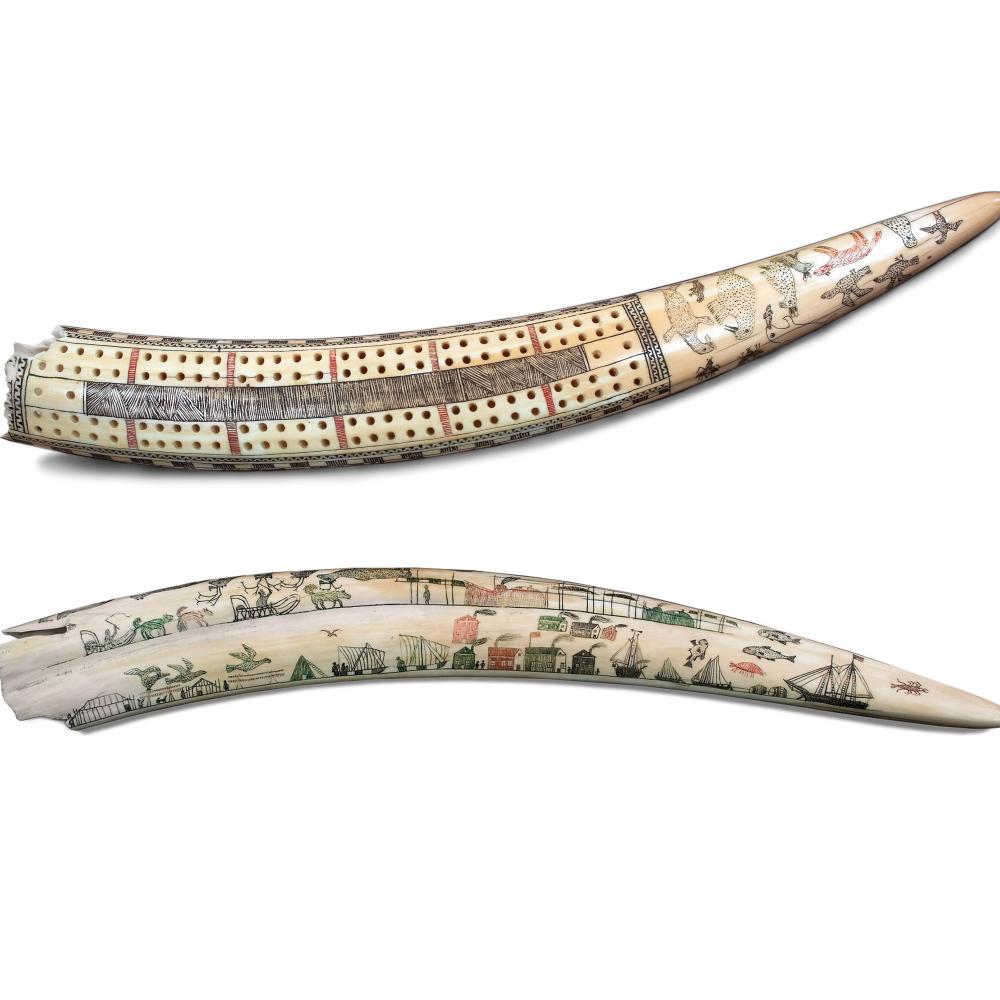Invented by British gambler and poet Sir John Suckling in the early 1600s, the card game cribbage has long been a favorite of seamen. In one legendary game aboard the submarine U.S.S. Wahoo during World War II, Lieutenant Commander Dudley “Mush” Morton dealt his executive officer, Richard “Dick” O’Kane, a perfect hand. The odds of receiving this exact set of cards are estimated at one in 216,000. O’Kane’s winning streak continued afterward as the Wahoo, tracking the Japanese navy in the northern Pacific, set a record for the number of ships sunk during its mission. The board from that game has been passed on continually to the longest-serving submarine in the U.S. Pacific fleet, and is currently aboard the U.S.S. Olympia.
Another tradition of sailors, especially in the nineteenth century, is scrimshaw, the art of carving on whale bones and teeth or walrus tusks. Showing images of animals and fish on one side and a village on the other, this walrus tusk features a cribbage scoreboard and appears in the online exhibition “Laura Jernegan: Girl on a Whaleship.”
Supported by NEH grants totaling $218,550 and produced by Martha’s Vineyard Museum, the website tells the story of nineteenth-century whaling through the real journal of a young girl from Edgartown, Massachusetts, who spent three years at sea on a whaler captained by her father. Between 1868 and 1871, the Jernegan family traveled around the treacherous Cape Horn of South America and throughout the Pacific. While the mother and children stayed in Hawaii, Laura’s father hunted whales in the Arctic. As Laura, her mother, and her brother made their way back east on the newly opened transcontinental railroad in the spring of 1871, Captain Jernegan’s ship was crushed by ice along with 32 other American whalers off the coast of Alaska. All 1,219 sailors from those ships were rescued.


